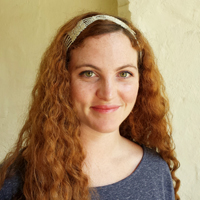More about An Eruption, Hawai'i

Sr. Contributor
The tumultuous landscape in An Eruption, Hawaii is not unlike the life of its creator and founder of the Volcano School, Jules Tavernier.
This dramatic landscape features Hawaii Island’s Mount Kilauea. Located on the southeastern slope of Mauna Loa, Kilauea has the distinction of being one of the most, if not THE most active volcano in the world. In fact, it continuously erupted from 1983-2018 and as of the writing of this article, is erupting again now. Based on the years Tavernier was active in Hawaii (1883-1889) this painting must depict either the 1884 or 1885 Kilauea eruption.
Hawaiian legend has it that Mount Kilauea and its Halema’uma’u crater are home to the volcano deity Pele, a goddess known for her fiery antics. We’re talking stealing boyfriends, turning people into trees/flowers/rocks, etc., and constantly fighting with her sister Nāmakaokahaʻi, the goddess of the sea. It was actually this ancient sisterly battle that brought Pele to live in Halema’uma’u. After accidentally burning down part of her ancestral home (oops), Pele was run out of town by Nāmakaokahaʻi. While being chased through the Pacific, Pele would dig holes trying to find shelter. It wasn’t until she dug what would become Halema’uma’u that her sister relented and Pele was able to rest. The Hawaiian archipelago and its many volcanoes are thought to be the result of Pele’s attempts to find shelter during this journey.
Like Pele, Jules Tavernier fled to Hawaii to run away from his mistakes, specifically debt and a bad marriage. Though the move to Hawaii was not purely for artistic motives, Tavernier was nonetheless successful and prolific during his brief time in the islands. Like so many non-natives before and since, Tavernier sold an idealized concept of Hawaiian beauty. So idealized in fact, that when he arrived in Honolulu in 1883 he had already painted his first volcano scene, having never seen a Hawaiian volcano in person. With this move, he marked his role as one of a handful of prominent landscape artists who would form the Volcano School.
Volcano School paintings like this one are recognized for their Romantic celebration of the sublime landscape in turmoil. In other words, paintings showcasing the glory of nature, nature in this instance being volcanoes. Works of the Volcano School are often as dramatic as Pele herself. Using bright reds, yellows, and oranges, contrasted against deep blacks, the viewer has no choice but to focus on the heat and flame of the lava amidst an otherwise barren landscape. As seen here, Tavernier’s Volcano School paintings work against the classical European landscape style in which he’d been trained and embraced Impressionistic techniques to capture light and color.
Keeping in mind that very few non-natives in the 1880s had seen the majesty of Hawaii or its volcanoes, Tavernier’s Volcano paintings captivated the world. This captivation was very intentional as Tavernier often produced and sold art to promote Hawaii as a destination. One such work was even commissioned by Hawaii’s King Kalakaua to be sent as a gift to the Emperor of Japan to highlight the happy working conditions of Japanese plantation workers. Now lost, he once highlighted and propagandized the glory of Kilauea by painting an 11 foot tall, 90 foot wide Volcano painting. Known as “The Cyclorama” it was exhibited in the only round building big enough for its display, a skate rink in Hilo. Despite consistently showing and selling his work, the artist's penchant for alcohol and overspending ultimately could not be overcome. Tavernier died penniless from alcoholism on May 18th, 1889.
Sources
- Cave, James. 2015. “These Haunting Paintings Show What Hawaii's Volcanoes Looked Like Before Color Photography.” HuffPost. https://www.huffpost.com/entry/hawaii-volcano-school-paintings_n_7038372.
- “Hawaii Center for Volcanology | Home.” 2019. SOEST Hawaii. http://www.soest.hawaii.edu/GG/HCV/kil-hist.html.
- “Holo Mai Pele (The Journey of Pele) (US National Park Service).” 2021. National Park Service. https://www.nps.gov/articles/holo-mai-pele.htm.
- “Kīlauea | US Geological Survey.” n.d. USGS.gov. Accessed March 10, 2022. https://www.usgs.gov/volcanoes/kilauea.
- Theroux, Joseph. 2005. “Genius Displayed: Jules Tavernier.” Hawaiian Journal of History 39:4. https://evols.library.manoa.hawaii.edu/bitstream/10524/399/JL39007.pdf.












Poetically composed.